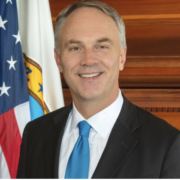During the height of the pandemic, Mayor Kate Gallego spearheaded a transformative initiative in Phoenix, expanding free Wi-Fi coverage outside of nearly 50 libraries, community, senior, and recreation centers to ensure all students had vital internet access. Today, this public service covers approximately 1.18 square miles (32,941,068 square feet) of exterior Wi-Fi coverage, allowing residents to connect their devices from 8 a.m. to 9 p.m. in parking lots and public areas adjacent to these facilities.
Building on that work with a larger effort to close the digital divide in the city, Gallego, along with the City Council, allocated $3 million from the American Rescue Plan Act to extend free Wi-Fi access to public and affordable housing communities for three years. This initiative is projected to benefit nearly 5,000 low-income households, offering not only internet connectivity but also invaluable digital skill trainings and broadband infrastructure. Initially targeting ten city-owned housing properties with the allocated funds, Gallego’s proactive leadership expanded the program to encompass an additional 27 affordable housing communities.
Research by Common Sense underscores the size of the digital divide, impacting underserved households nationwide, including urban, suburban, rural, and tribal communities in Arizona. With 29% of students and 10% of teachers lacking adequate internet access in the state, Mayor Gallego’s efforts continue to tackle a critical need.
This initiative stands as a shining example of efficient utilization of ARPA funds, combining free access with initiatives around digital skills training and broadband infrastructure for people who need it. Drawing parallels to the successful Free Apartment Wi-Fi initiative championed by EducationSuperhighway, this program echoes that effort’s simplicity in implementation for building owners while offering residents Wi-Fi similar to services found in hotels. With an expected reach of an additional 4,941 low-income households over three years, Mayor Gallego’s commitment to bridging the digital divide is poised to transform lives and communities across Phoenix.














